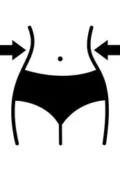Kicking off any weight loss plan is a bit like starting a new chapter in your life. You got to know what you’re working with first. Whether it’s about losing those pesky extra pounds from the holidays or making a major lifestyle change, knowing your body’s unique rhythm matters. Everyone’s different, right? What works for your friend might not necessarily be your golden ticket to weight loss happiness.
Now, there’s no one-size-fits-all because our body types vary, thanks to good ol’ genetics. Some folks naturally carry weight in certain areas, and others might find shedding pounds a tad more challenging. Doesn’t mean it’s impossible, just means the journey’s a bit different. This means tweaking the plan according to your unique blueprint.
Setting goals is crucial but making them realistic is what keeps you from feeling like you’ve set yourself up for failure right from the get-go. It’s about making those little lifestyle changes, which, let me tell you, have a bigger impact over the long haul than drastic, unsustainable measures. No crash diets, just small, consistent moves.
Incremental changes are key. Imagine this as a marathon, not a sprint. You’ll want to move forward at a pace that’s right for you, without burning out. It’s not just about losing weight but enhancing well-being, so enjoy this journey of self-discovery and transformation for three months and see where it takes you.
Setting SMART Goals for a Healthier You
Let’s talk about SMART goals—they’re your roadmap to success in this weight loss journey. SMART stands for Specific, Measurable, Achievable, Relevant, and Time-bound, and it’s the secret sauce to setting goals you’ll actually stick to.
So, what does this look like in your world? Instead of saying, “I want to lose weight,” think more along the lines of, “I want to lose 10 pounds over the next three months by exercising three times a week and eating more veggies.” See the difference? It’s all about clarity and commitment.
Having a specific plan helps you measure your progress, keeping you motivated and on track. You know precisely what success looks like and can celebrate those small wins along the way. Nothing like tracking a solid improvement to keep the momentum going.
Your goals should be achievable ambition’s great, but setting yourself a target that’s wildly out of reach is just going to stress you out. It’s crucial to balance hope with reality, creating steps that stretch your abilities but are still within reach.
Don’t overlook the relevance of your goals. Why are you setting them, and how do they align with your personal values? This deeper understanding fuels your drive to succeed.
Time-bound goals keep the focus sharp. A three-month timeline isn’t too long that you lose enthusiasm, yet it’s ample time to make meaningful progress. Just remember to keep it flexible when life throws a curveball—adjust rather than abandon.
Crafting a Personalized Diet Plan
When you’re gearing up to tackle weight loss, your diet plays a starring role. No need to go it alone, though; consulting with a nutritionist or dietician can give you the tailored advice you need to fine-tune your meal plans according to your goals and body type.
Balancing your plate with the right macronutrients—like proteins, fats, and carbs—is a game changer. Each of these buddies plays a role in keeping you energized, so you can power through your day without feeling drained. A well-rounded diet keeps those hunger pangs at bay and helps you avoid the hangry traps.
Don’t underestimate the power of hydration. Water is your best friend when trying to lose weight. Keeping up with your water intake aids digestion and can even trick that rumbling stomach into thinking it’s full. Sipping steadily through the day does wonders for your alertness and keeps those hydration levels rocking.
Let’s not forget the fiber. It’s like your digestive system’s best mate, keeping things running smoothly. Adding more veggies, fruits, and whole grains helps to keep you feeling fuller for longer, cutting down the temptation to snack mindlessly.
Mindful eating and portion control are superstars in this scene. Sit down without distractions, savor each bite, and become more attuned to your hunger signals. It’s about eating just enough to nourish your body, not overload it. These simple practices teach you to enjoy food without going overboard.
Incorporating Exercise for Optimal Results
Exercise is the turbo boost that complements all your dieting efforts. Picking activities, you actually enjoy makes it way easier to stick with. Whether it’s dancing, swimming, or just jogging around your block, finding what feels right for you is essential.
Strength training and cardio should become your two best friends. They each bring their own benefits to the table. Cardio helps to torch calories and improve your cardiovascular health, while strength training builds muscle, which in turn boosts your metabolism. This combo helps in sculpting a fitter, healthier you.
Consistency beats intensity every single time. No need to go all out if it means burning out. It’s about making exercise a manageable part of your routine rather than a dreaded chore. Even a 20-minute session adds up over a week. It’s these small, regular steps that’ll actually carry you across the finish line.
We all hit bumps along the way, but learning to overcome barriers and stay motivated is part of the gig. From bad weather to busy schedules or just plain exhaustion, life is full of little challenges. Staying flexible and having backup plans, like an indoor workout session or a quick burst of home exercises, keeps you on track even on the rough days.
In three months, with the right mix of exercise, diet, and smart planning, you’ll start seeing changes not just in your pants size, but in how you feel. Energy levels spike, confidence boosts, and there’s a sense of accomplishment because you’re not just following a plan; you’re crafting your own success story.

